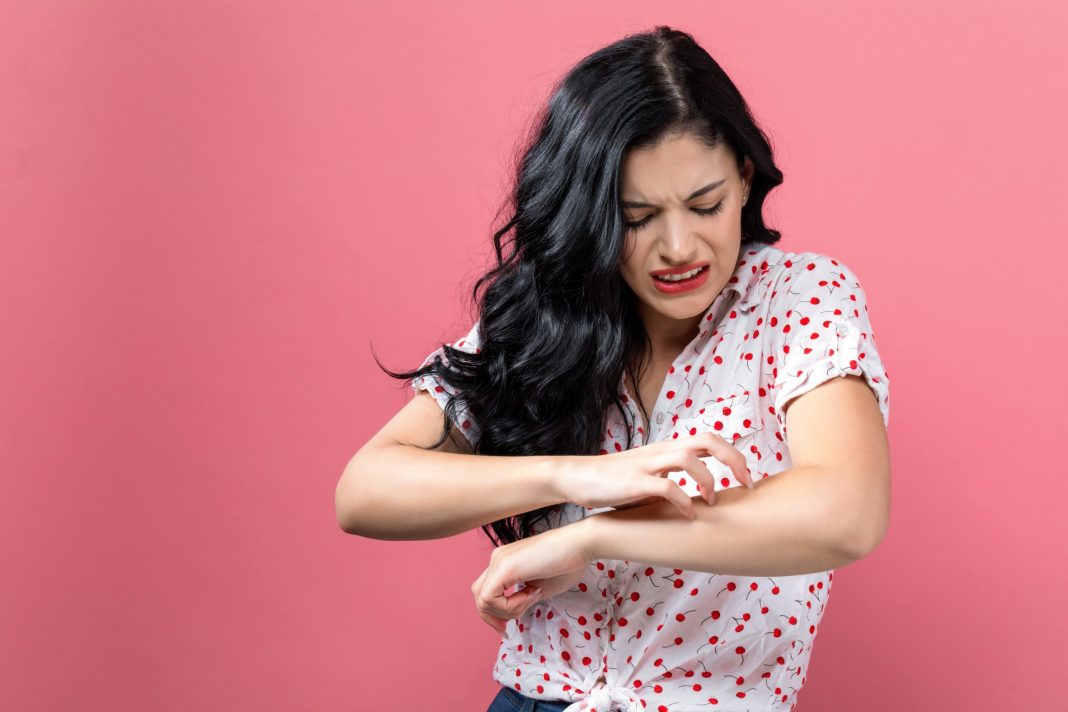Health industry experts address the causes, symptoms and management of the skin rash commonly known as hives.
Urticaria refers to a chronic skin condition characterised by red, itchy welts[1]. The condition lasts for longer than six weeks, recurring over months or years without a clear cause of origin.
The condition in itself is disruptive and uncomfortable, but it can also have repercussions on other aspects of health, such as interfering with sleep and work, causing stress and anxiety, fearing particular places or products in case they are the cause of the welts, and complications resulting from itching, breaking skin and infection.
“At least once a week, a patient presents to the pharmacy with these symptoms, particularly late at night or on the weekends when doctors’ surgeries are typically closed,” pharmacist Erin Cooper, of Capital Chemist Wanniassa in Canberra, said.
“From my experience, I see presentation more frequently in adults who have left the symptoms for a couple of days/weeks than in children, because parents are usually quicker to respond to these symptoms.”
Symptoms
According to the Mayo Clinic, red or purple welts can appear anywhere on the body, often swelling and growing in size or changing shape over the period of inflammation.
Intense itchiness (pruritus) often accompanies the welts, along with swelling (angioedema) around the sensitive eye, cheek and lip area.
Symptoms of itchiness, redness and swelling can worsen with exposure to heat, stress or exercise.
Causes
Melbourne Allergy Asthma and Immunology Consultants (MAAIC) advises that one in six people will experience hives at some point in their lives[2].
The clinic advises that if antihistamines are not effective as the first course of treatment, then patients should see a doctor and/or a specialist.
According to the Australasian Society of Clinical Immunology and Allergy (ASCIA), urticaria may be caused by allergy to plants or animals, or to food, medicines, or insect stings[3].
The condition may also be caused by a viral infection, which is most commonly the case with children.
Treatment
Because the condition is recurrent, there is not necessarily a cure. Prevention and treatment of the symptoms is the best course of action.
The Mayo Clinic says prevention may involve avoiding places associated with a break-out of welts (this could be due to plants, insects, or other allergens being present) and ensuring bedding and clothing are thoroughly laundered to remove insects, pollen or other irritants from material in contact with the skin.
When a flare-up occurs, the symptoms can be managed and any consequential health impacts also treated. This means treating the redness, itchiness and inflammation, and addressing lack of sleep, stress, and wounds or infection resulting from breaking the skin.
“A flare-up of symptoms can occur if a patient is exposed to whatever it is that triggers their allergic response,” Ms Cooper said. “This could be a medication, such as antibiotics, a food additive or a change in season.
“It’s important to have a management plan for when a flare-up occurs, but it’s also important to prevent these flare-ups from occurring. This can be done by wearing loose, breezy clothing, avoiding overheating the skin.”
Severe symptoms
The US-based website and health information provider Healthline[4] advises that patients should seek immediate medical attention if they experience any of the following symptoms, which are indicative of severe allergic reaction and may require emergency treatment:
- Dizziness.
- Swelling of the throat or face.
- Difficulty breathing.
Pharmacists who witness these symptoms in a patient should advise calling an ambulance or do so themselves.
Pharmacy role in management
Ms Cooper says management of urticaria symptoms involves the use of an oral antihistamine and keeping the skin cool with loose clothing, a damp washcloth or a cooling moisturiser.
Pharmacists are also advised to ask patients about any allergies they may have, the current state of their health, and the medications they’re taking, including complementary medicines. This is to ascertain the risk of contraindications or to avoid recommending oral or topical products that may trigger allergies or simply not work for that individual.
“Patients should be made aware that [some antihistamines] can cause drowsiness in some patients, and if they’re taking other medications with similar effects, to be mindful of driving and other activities,” Ms Cooper said.
Retail pharmacy products for relief
According to Healthline[5], a bath with either colloidal oatmeal or a couple of handfuls of baking soda can alleviate itching.
It adds that certain soaps, especially those with fragrances, can irritate the skin and worsen the symptoms of sensitivity and itchiness.
Blood and allergy testing
The Australian Allergy Centre says 1.8 per cent of the population experience urticaria daily, with a 15 per cent chance of people experiencing the condition at least once in their lives[6].
The Centre adds that blood and allergy testing are not typically recommended for urticaria, chronic or otherwise.
This is because, in around 80 per cent of cases, no origin can be established, and even though allergy can cause urticaria, it’s not consistently the cause. Infection, thyroid autoimmunity, hormonal imbalances, particular medications or connective tissue disease can also result in urticaria symptoms.
References:
[1] https://www.mayoclinic.org/diseases-conditions/chronic-hives/symptoms-causes/syc-20352719
[2] https://www.allergyasthma.com.au/urticaria.html
[3] https://www.allergy.org.au/patients/skin-allergy/urticaria-hives
[4] https://www.healthline.com/health/skin-disorders/how-to-get-rid-of-hives#_noHeaderPrefixedContent
[5] https://www.healthline.com/health/skin-disorders/how-to-get-rid-of-hives
[6] https://www.australianallergycentre.com.au/types-of-allergy/urticaria/
This feature was originally published in the November issue of Retail Pharmacy magazine.






